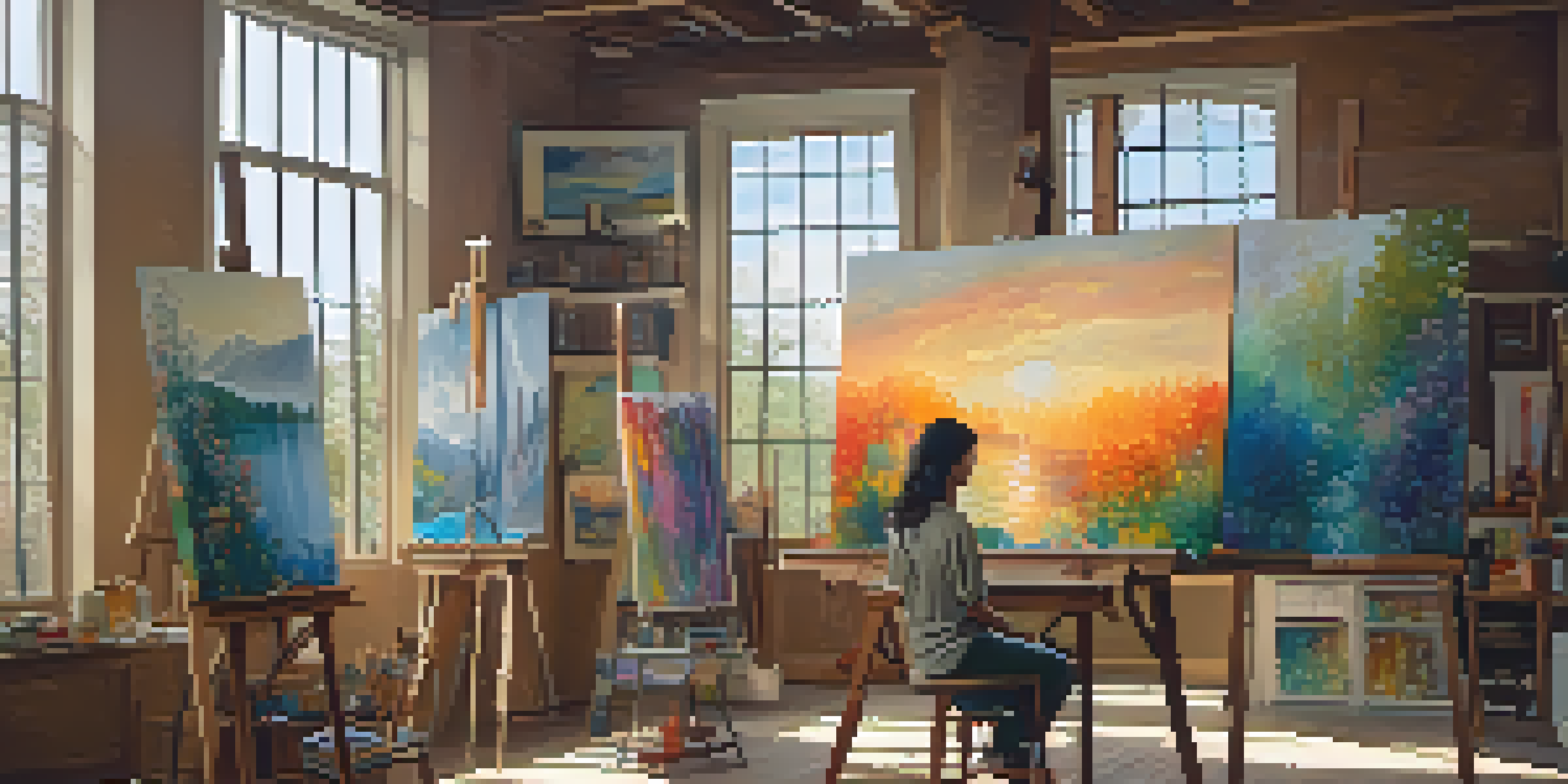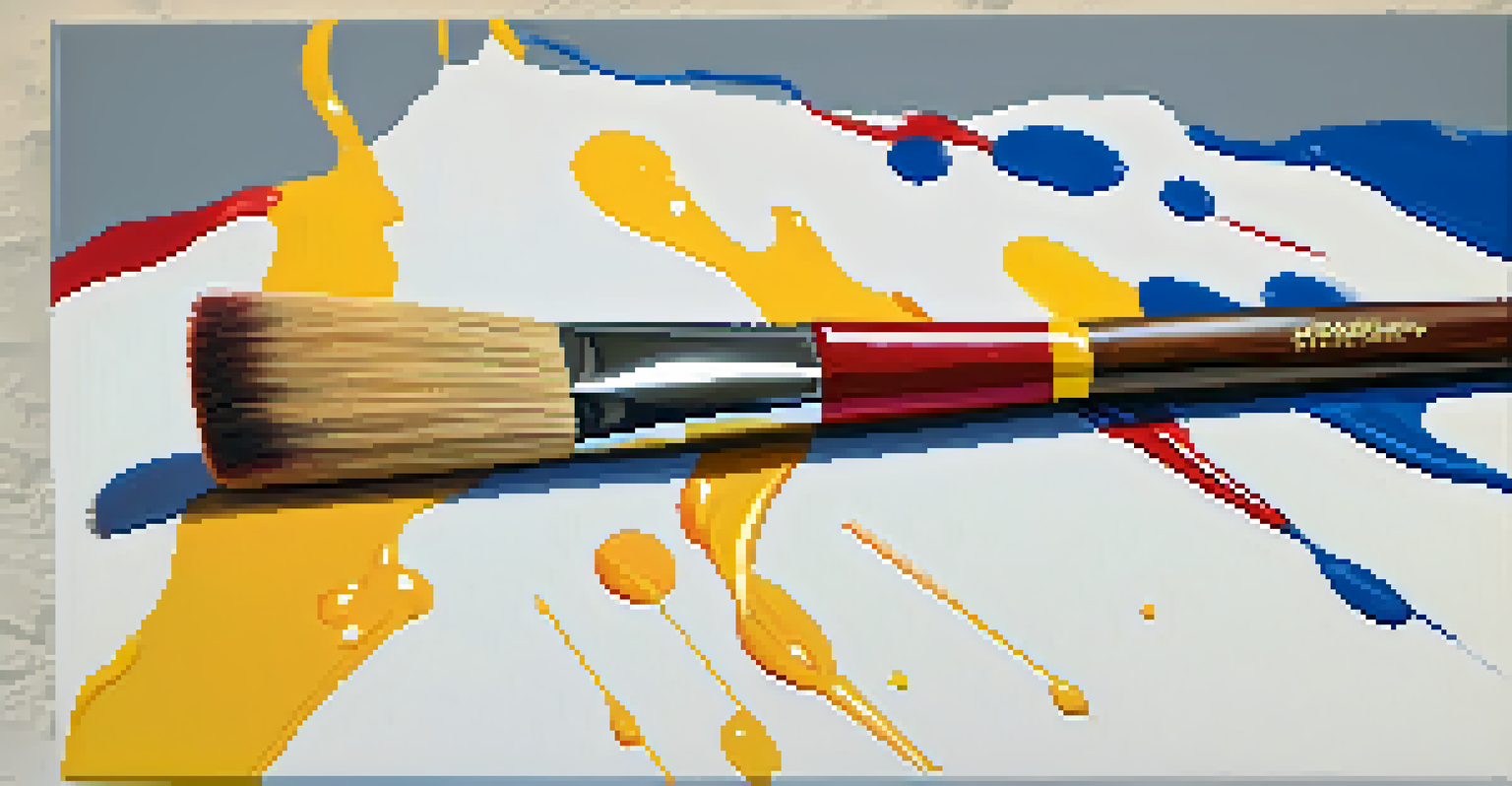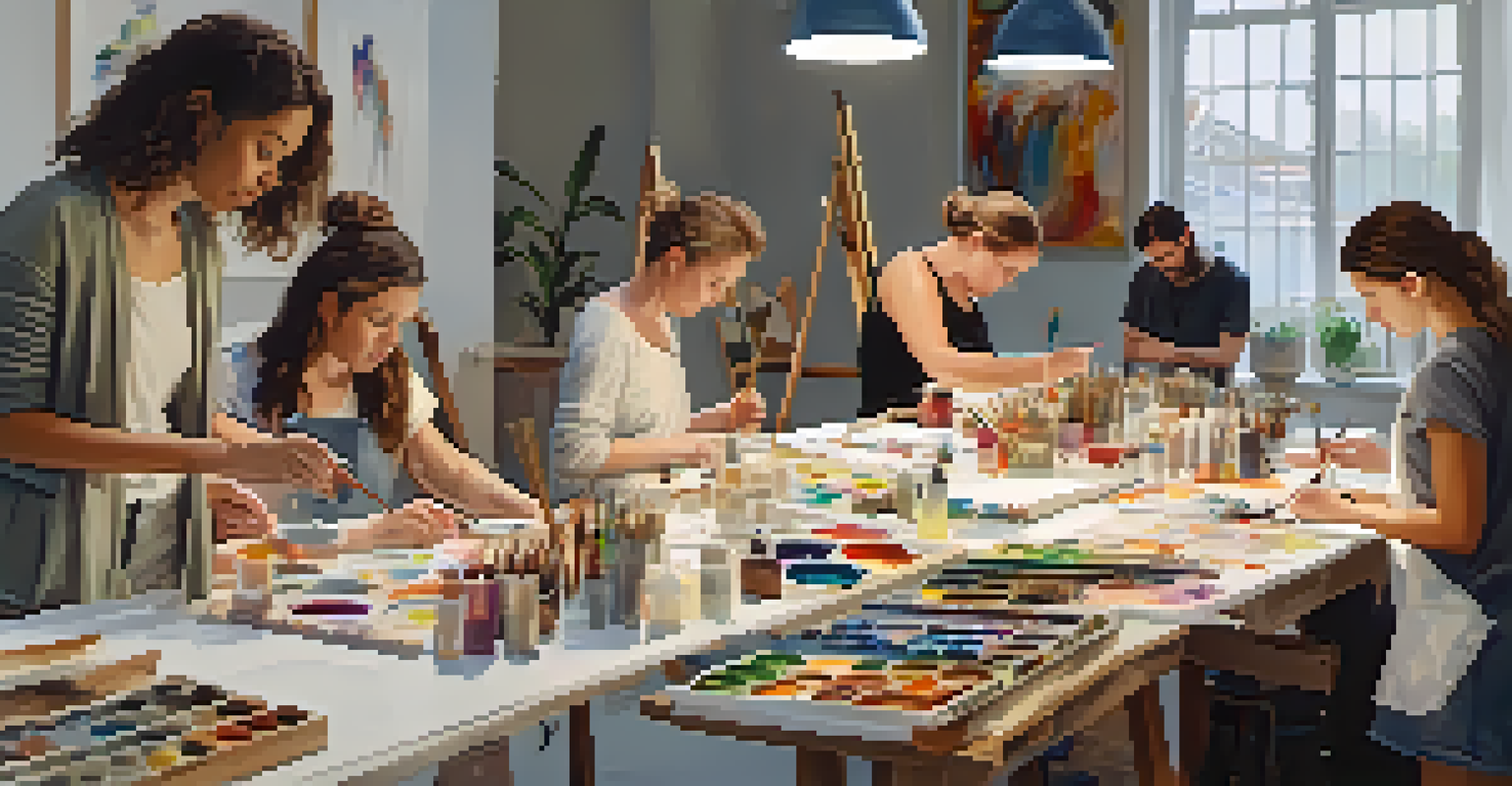Artistic Responses to Trauma: Subconscious Creativity Unleashed

Understanding Trauma and Its Impact on Creativity
Trauma is an experience that can deeply affect our mental and emotional state. It often leaves individuals feeling vulnerable, isolated, or overwhelmed. Interestingly, many artists find that these feelings can fuel their creativity, leading to powerful expressions of their experiences.
Art is the most beautiful of all lies.
When we talk about trauma, it’s essential to recognize that it isn’t one-size-fits-all; each person’s response varies. For some, trauma becomes a barrier that stifles creativity, while for others, it acts as a catalyst that unlocks new depths of artistic expression. This paradox is what makes the connection between trauma and creativity so intriguing.
Art becomes a means of processing trauma, allowing individuals to externalize their internal struggles. Through various forms of artistic expression, such as painting, writing, or music, they can articulate feelings that might be too complex to convey verbally.
The Role of the Subconscious in Artistic Expression
Our subconscious mind plays a significant role in how we express ourselves artistically. Often, it processes emotions and experiences that our conscious mind might overlook or suppress. This can lead to spontaneous bursts of creativity that reveal our true feelings about trauma.

Think of the subconscious as a hidden reservoir of thoughts and emotions, much like a deep ocean. When artists dive into this ocean, they may uncover pearls of creativity that reflect their trauma in unexpected ways. This process can be both cathartic and enlightening.
Trauma Fuels Artistic Expression
Many artists find that their experiences with trauma can serve as a powerful catalyst for creativity.
By tapping into their subconscious, artists can create works that resonate deeply with others, forging connections through shared experiences of pain. These artistic responses can serve as a bridge, fostering understanding and empathy among those who have experienced similar traumas.
Art as a Healing Tool for Trauma Survivors
For many, creating art becomes a form of therapy, offering a safe space to explore and express difficult emotions. This therapeutic aspect of art can help individuals make sense of their experiences, transforming pain into something beautiful and meaningful.
The wound is the place where the Light enters you.
Art therapy, a recognized practice, utilizes creative processes to aid healing. Through painting, drawing, or sculpting, individuals are encouraged to express their feelings without judgment, promoting emotional release and personal growth.
As trauma survivors engage with their art, they may discover new perspectives on their experiences. This can lead to a sense of empowerment, as they reclaim their narratives and find strength in vulnerability.
Case Studies: Artists Who Channeled Trauma into Creativity
Many renowned artists have used their personal trauma as a source of inspiration for their work. For instance, Frida Kahlo's paintings vividly depict her physical and emotional suffering, allowing her to explore themes of identity, pain, and resilience.
Similarly, Vincent van Gogh's struggles with mental health are reflected in his artwork, which often portrays intense emotions through bold colors and expressive brushstrokes. His legacy continues to inspire countless individuals grappling with their own traumas.
Art as Healing and Empowerment
Creating art can provide trauma survivors with a therapeutic outlet, helping them process their emotions and reclaim their narratives.
These examples illustrate how artists can transform their pain into profound creativity, providing insight into the human experience. Their works not only serve as a reflection of their struggles but also resonate with audiences, fostering connection and understanding.
The Connection Between Trauma and Artistic Innovation
Trauma can lead to remarkable innovation in art, pushing boundaries and challenging conventional norms. Artists often explore themes of grief, loss, and resilience, resulting in unique and thought-provoking creations.
This innovation is not limited to traditional mediums; it encompasses digital art, performance, and experimental forms. As artists navigate their trauma, they may discover new techniques and styles that break away from the past.
The creative process becomes a space for experimentation, allowing artists to confront their feelings head-on. This journey often leads to groundbreaking works that resonate widely, showcasing the transformative power of art.
The Community Aspect of Art and Healing
Artistic responses to trauma often foster a sense of community among creators and audiences alike. When artists share their stories through their work, they invite others to reflect on their own experiences, creating a shared space for healing.
Exhibitions, workshops, and group therapy sessions centered around art can help individuals connect, share, and support one another. This sense of belonging can be incredibly powerful for those who have felt isolated in their trauma.
Community Strengthens Healing
Artistic expression fosters a sense of community among creators and audiences, promoting shared healing through collective experiences.
Through these communal experiences, individuals can find solace and encouragement, further emphasizing the idea that art not only heals the creator but also the viewer. Together, they navigate the complexities of trauma, finding strength in shared vulnerability.
Moving Forward: Embracing Creativity After Trauma
For many, the journey of healing through art is ongoing. As individuals continue to process their trauma, they may find new ways to express themselves creatively. This ongoing exploration can be a vital part of their recovery.
Embracing creativity allows trauma survivors to reclaim their narrative, shifting the focus from pain to possibility. Every brushstroke, lyric, or written word can serve as a testament to their resilience.

Ultimately, the act of creating can be a powerful catalyst for change, inspiring both the artist and those who engage with their work. As we celebrate artistic responses to trauma, we recognize the strength and beauty that can emerge from even the darkest experiences.